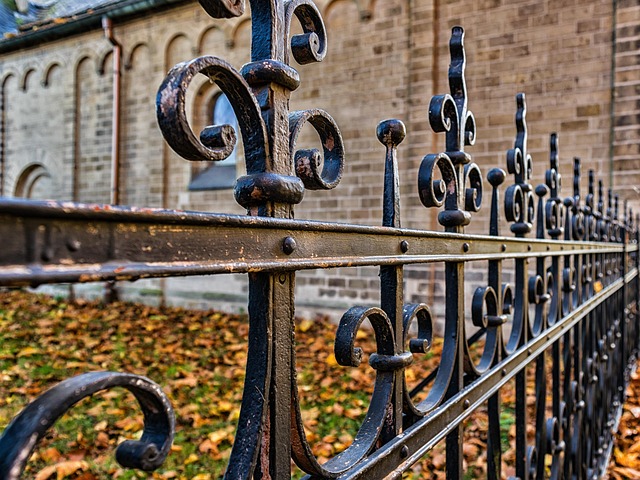In New Bedford, fence maintenance is not just about aesthetics; it’s a crucial aspect of property upkeep, offering both functional and ornamental benefits. This comprehensive guide tackles the diverse needs of New Bedford homeowners by exploring different fence styles and materials suited to local conditions. We delve into the installation process, providing a step-by-step manual for a solid foundation. Additionally, maintenance tips ensure longevity, helping you preserve your investment and enhance your outdoor space’s appeal.
- Understanding New Bedford Fence Needs
- Choosing the Right Fence Style and Material
- Installation Process: Step-by-Step Guide
- Maintenance Tips for Longevity
Understanding New Bedford Fence Needs
Fences are integral to any property, serving both functional and aesthetic purposes. In New Bedford, understanding the unique needs of your fence is crucial for effective repair and installation. The region’s climate presents specific challenges; harsh winters and frequent coastal storms can take a toll on wooden fences, leading to rot, warping, or damage from flying debris.
Concrete and metal fences also require consideration as they may need reinforcement against heavy weather conditions and potential salt water exposure. Additionally, local regulations and property associations often have guidelines regarding fence styles, heights, and materials, which homeowners should be aware of before undertaking any repair or installation project.
Choosing the Right Fence Style and Material
When it comes to New Bedford fence repair and installation, selecting the perfect style and material is a crucial step in achieving both functionality and aesthetics. The first consideration is the purpose of your fence; is it for privacy, security, or purely decorative? Each serves different needs – a solid wooden fence offers privacy, while a metal chain-link fence provides security without blocking sightlines. Once you’ve determined function, material selection becomes easier. Wood, vinyl, and steel are popular choices, each with unique benefits. For instance, wood adds natural charm but requires more maintenance; vinyl is low-maintenance and durable; and steel offers strength and longevity but might be pricier.
The style of your fence should complement your property’s architecture and personal taste. Traditional styles like picket fences evoke a sense of old-world charm, while modern designs feature clean lines and minimalist aesthetics. Consider the overall look you want to achieve – whether it blends seamlessly with existing structures or stands out as a striking focal point. Remember, the right combination of style and material will not only enhance your outdoor space but also increase your property’s value.
Installation Process: Step-by-Step Guide
The installation process for a new fence begins with measuring and marking the perimeter of your desired fencing area, ensuring precise positioning. Next, dig holes for the posts, setting them at the appropriate depth to ensure stability. Once the posts are placed, use concrete to secure them firmly in position, allowing it to set according to manufacturer recommendations.
After the concrete has cured, attach the fence panels or rails to the posts using suitable hardware. This step involves aligning and securing the panels, ensuring they are level and properly supported. Finally, finish by adding any additional features like gates, latches, or decorative elements, ensuring a secure and aesthetically pleasing installation.
Maintenance Tips for Longevity
Regular maintenance is key to ensuring your fence remains sturdy and lasts for years to come. One simple yet effective tip is to clean your fence regularly, especially after significant weather events like storms or heavy snow. Using a soft brush or garden hose, remove any dirt, debris, or moss buildup. This not only improves the aesthetic appeal but also prevents water damage and rusting.
Additionally, inspect your fence for any signs of wear and tear, such as loose or missing boards, rotten sections, or damaged posts. Addressing these issues promptly will prevent further deterioration. Consider applying a fresh coat of paint or sealant every few years to protect the wood from the elements, enhancing its longevity and preserving its appearance.
